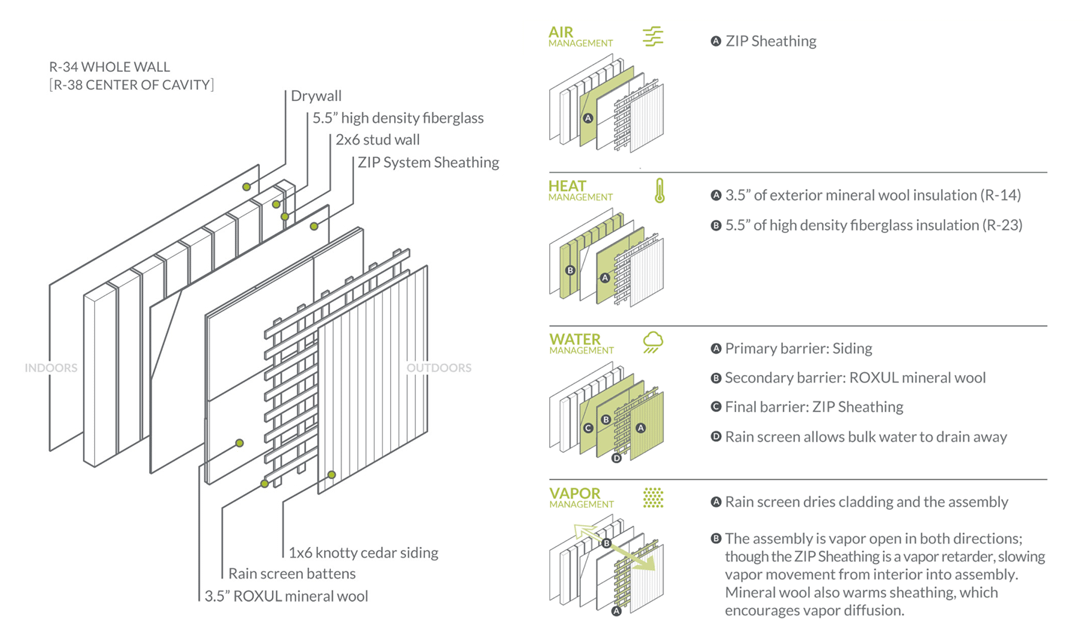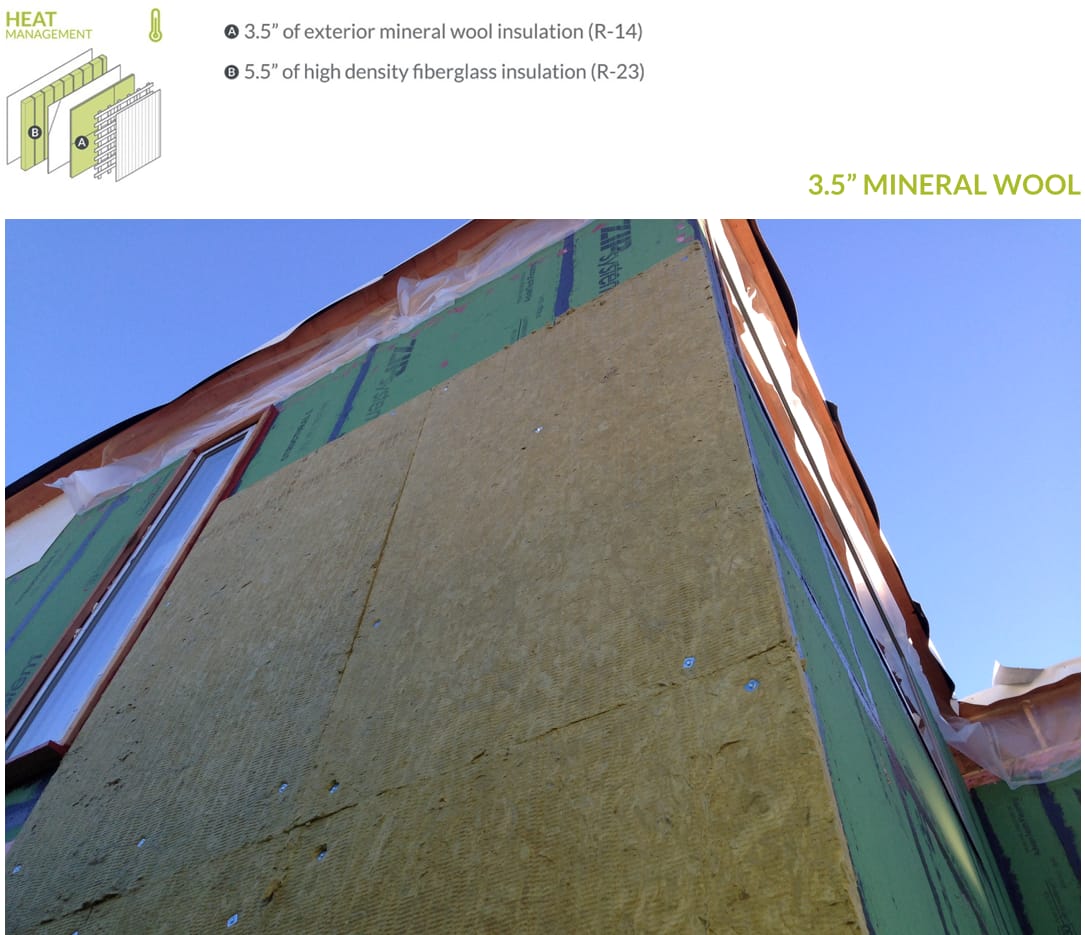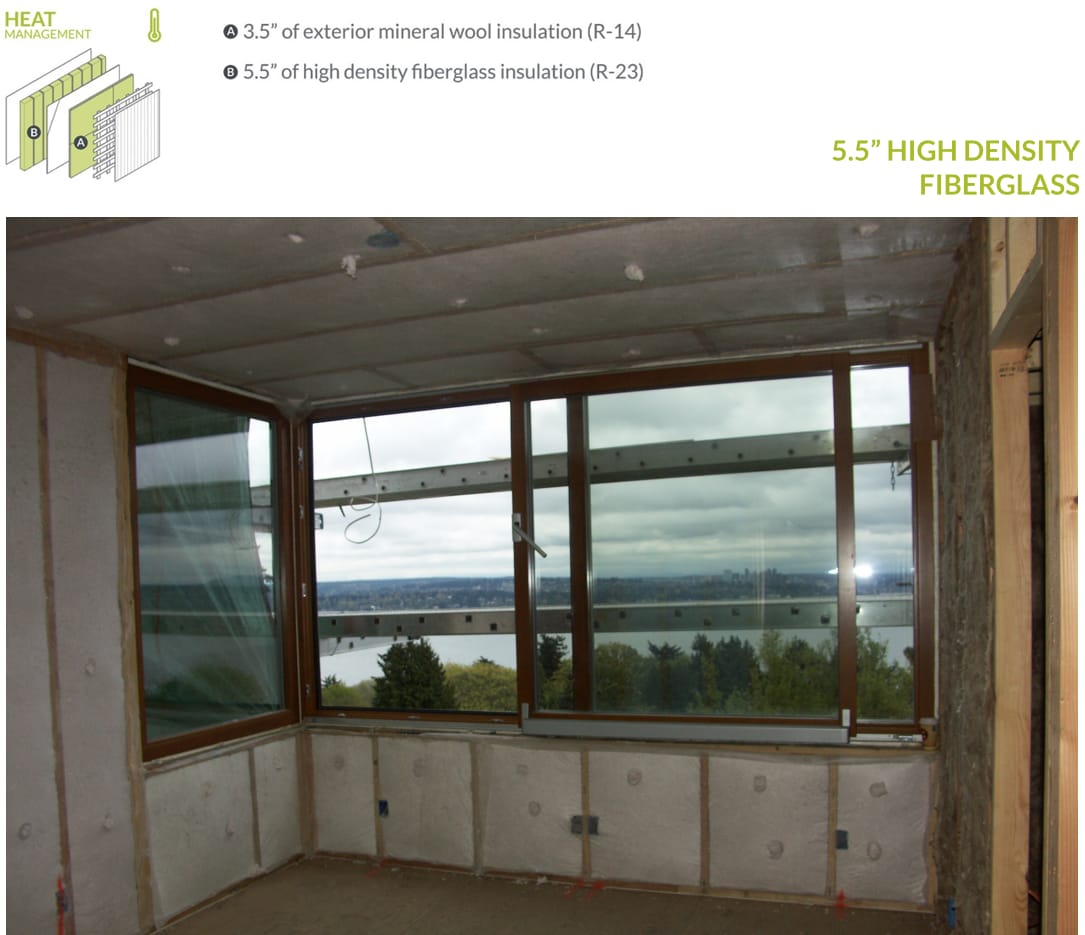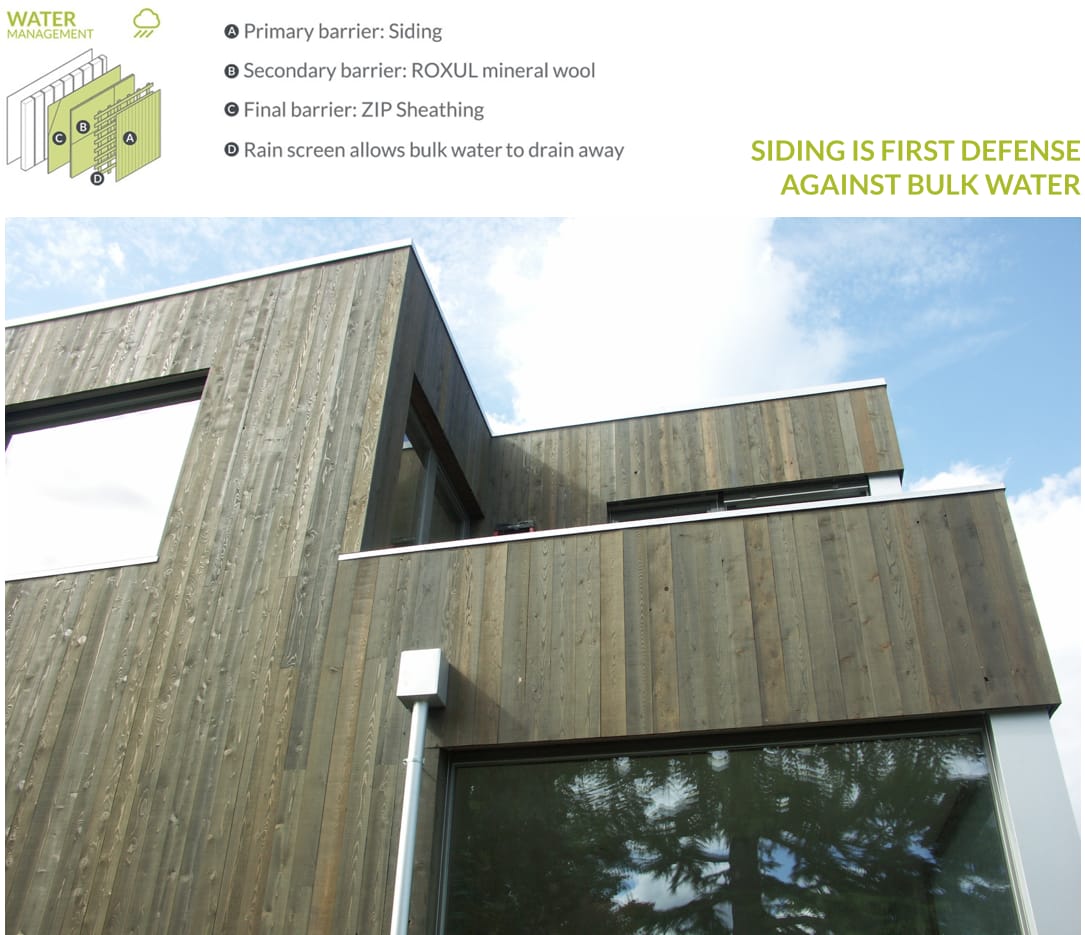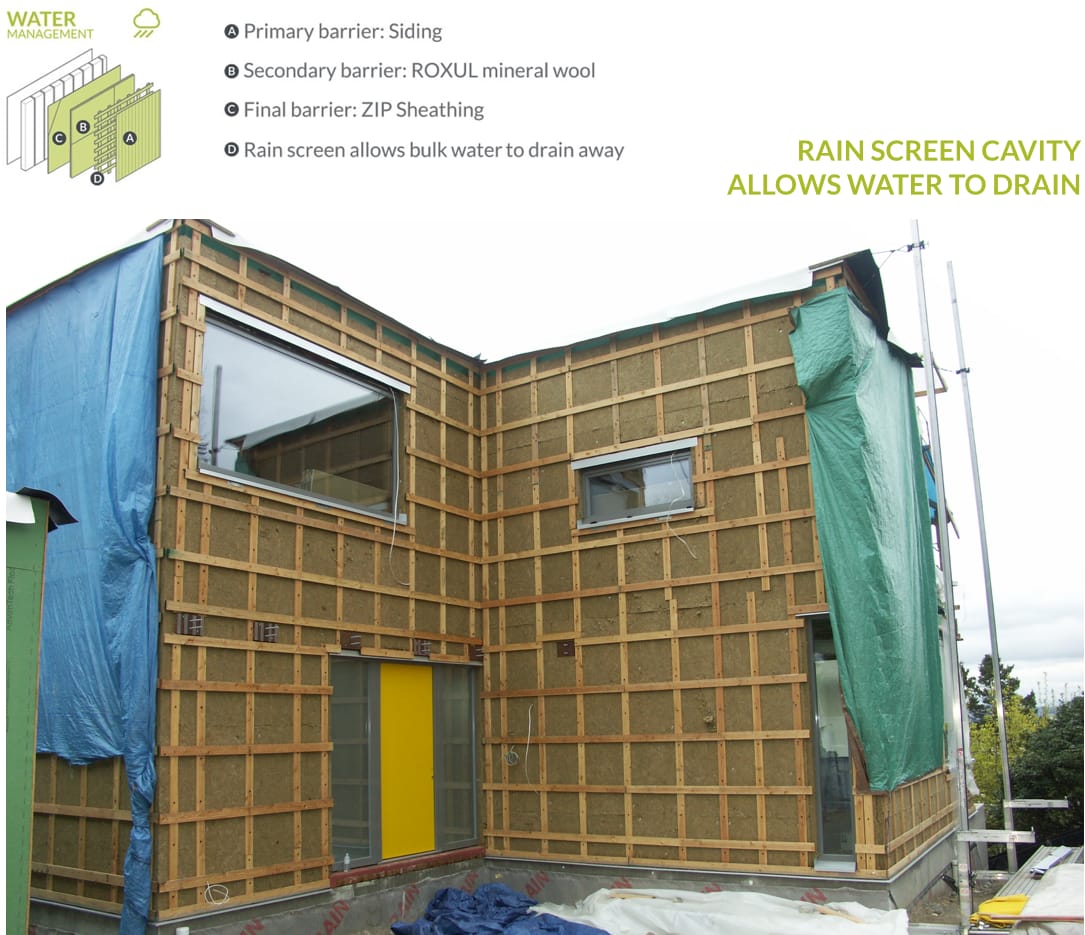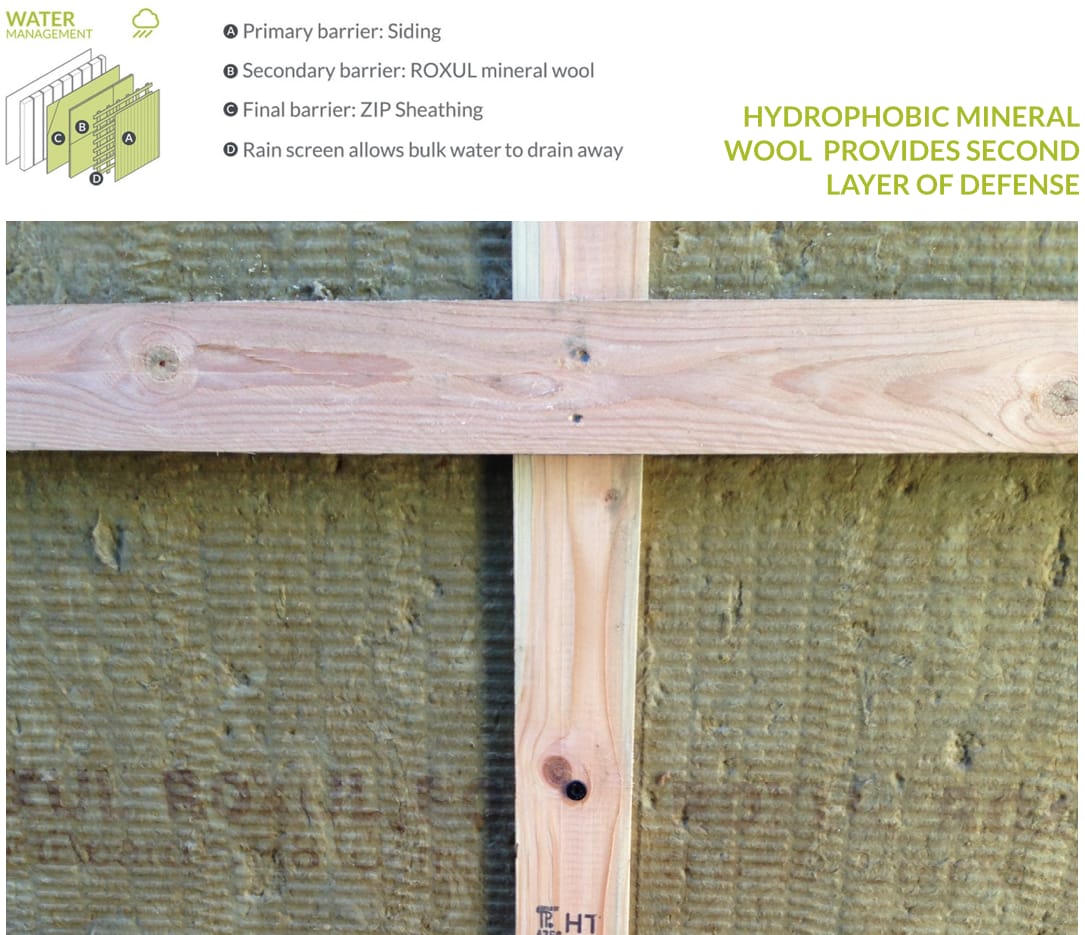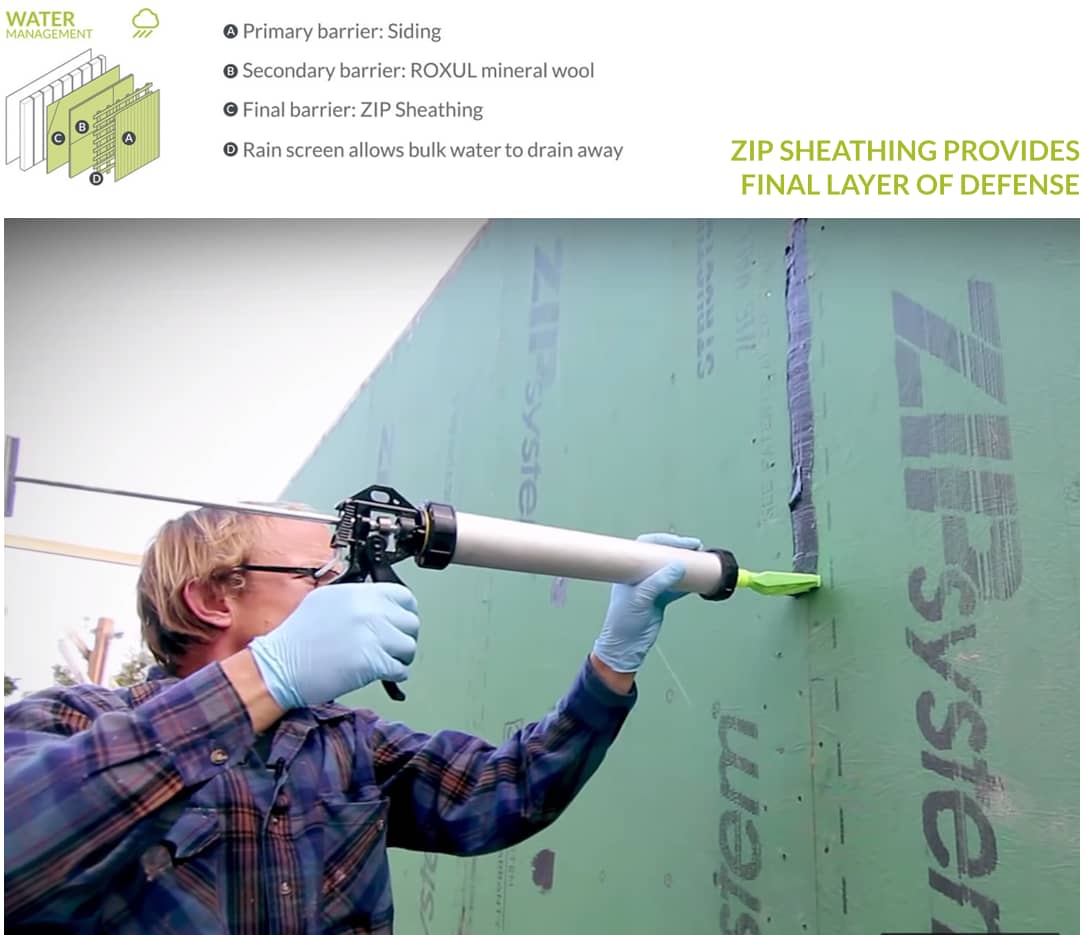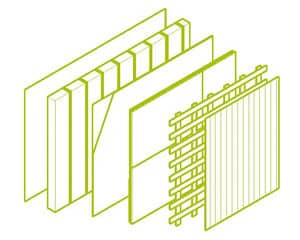
MADRONA
The wall assembly at Madrona Passive House represents an effort to move Passive House detailing even closer to standard construction practice, which is good for both installers in the field and for project budgets. The wall at Madrona Passive House takes advantage of the compressive strength of mineral wool to suspend the home’s exterior insulation with the rain screen battens’ fasteners.

ZIP System Sheathing (sheets of OSB covered in a weather resistant coating) with fluid applied sealant at seams, serves as the assembly’s air barrier (and WRB).

A 3.5” exterior, monolithic layer of ROXUL mineral wool insulation adds R-14 of insulative value to the assembly, while 5.5” of high density fiberglass insulation brings another R-23. The wall’s total insulative value in assembly (adding insulation, sheet goods, air films, etc.) is R-39 at center of cavity and R-34 whole wall.

Madrona Passive House’s 1×6 knotty cedar siding serves as the primary barrier to water intrusion, while the rain screen cavity behind the siding allows water to drain away. The ROXUL mineral wool is hydrophobic, so provides another barrier to water, while the ZIP Sheathing WRB serves as the final barrier.

Because the OSB of the ZIP Sheathing is a vapor retarder, the assembly is semi-permeable to the inside, slowing vapor diffusion from the home’s interior into the assembly. The mineral wool warms the ZIP Sheathing, preventing moisture accumulation there. And because the mineral wool is very vapor open, vapor diffusion to the outside is fairly unimpeded. The assembly’s ventilated rain screen adds drying capacity, and therefore durability, to the wall.

With Madrona Passive House’s wall we have simplified the assembly down to six material layers; by comparison, Karuna House and Pumpkin Ridge Passive House both have seven layers, while the Glasswood Retrofit has ten. See an annotated photo tour of the assembly’s layers:


